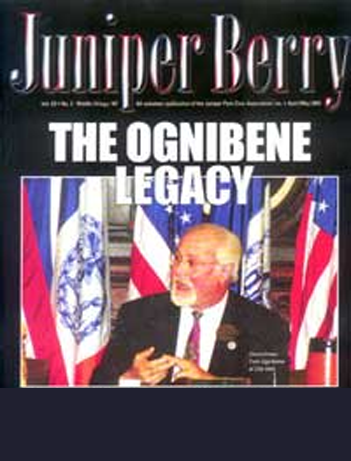The rumbling noise of this seventy car Bay Ridge CSX freight train is ignored by Juniper's boys of summer.
Unseen by and unknown to many Midvilleites, this rail line was organized in 1892 as the New York Connecting Railroad to construct an East River bridge at Hell Gate that would link the New Haven Railroad with the Long Island Rail Road at Fresh Pond junction. This was based on a suggestion by the Pennsylvania Railroad's Samuel Rea for a direct rail freight link with the New Haven Railroad for New England freight traffic. At that time freight traveled by a time consuming 14 miles car ferry transfer across New York Harbor which operated between the Pennsy's Greenville, New Jersey terminal and the New Haven at Port Morris Bronx. Nothing came of this idea until the Pennsy tunneled under the Hudson River to a new Pennsylvania Station in Manhattan and then under the East River to a direct rail link in Long Island City with the LIRR, which the Pennsy acquired by 1900. In 1902 the New Haven and the Pennsylvania acquired the stock of the New York Connecting and by 1912 had started construction of the project which would connect the New Haven from a point near Port Morris in the Bronx to the Pennsylvania at Harold Avenue in Long Island City.
The New York Connecting stood as a remarkable engineering feat. A high curving viaduct carried the four track main line across Ward's and Randall's Island. Included in the structure were two 175-foot spans over the Bronx Kill and a bridge nearly 1200 foot long across the Little Hell Gate. The Hell Gate Bridge designed, by noted bridge engineer Gustav Lindenthal, was a massive steel arch structure of unprecedented dimensions, with a clear span of 977 feet, 6 inches and a clearance of 135 feet above mean high water. It was longer and heavier than any other previous arch bridge. On the Long Island side of the bridge the tracks were carried on a long steel and concrete viaduct almost to the point where they joined the Pennsylvania at Sunnyside.
The new route over the Hell Gate Bridge was opened for passenger service on April 1, 1917, using steam power. By the end of the year the New York Connecting was joined to the Long Island's Bay Ridge line at Fresh Pond Junction, affording direct access between the New Haven and a new car ferry terminal at Bay Ridge that was only three and one half miles across New York Harbor from the Pennsylvania's Greenville Terminal. Early in 1918 the passenger train route was electrified with 11,000-volt AC catenary all the way to the Junction with Pennsy third rail at Harold Avenue in Long Island City. Freight trains continued to use steam power until 1927 when the New York Connecting and Long Island jointly completed the installation of 11,000 AC catenary to Bay Ridge. Freight trains ran through to Bay Ridge from the New Haven's Cedar Hill year behind New Haven motive power, while the Long Island acquired 14 boxy (B-3) electric locomotives for Bay Ridge switching and transfer service.
For many years after there was little change in the New York Connection's electrified freight route between Hell Gate and Bay Ridge. Its splendid overhead catenary, wall maintained two-track, right -of-way, and powerful New Haven electric freight locomotives were symbolic of an age when railroads dominated the landscapelike dinosaurs. This age was not to last.
On January 20, 1966, the Long Island Rail Road, long in receivership, was sold by the Pennsylvania to the New York State Metropolitan Commuter Transportation Authority. On the same day the Bay Ridge branch of the LIRR was transferred to the Pennsy. In 1967 the New York Connecting became part of the newly merged -Pennsylvania and New York Central (Penn-Central) system. The electrified overhead of the Hell Gate – Bay Ridge freight line was dismantled in 1969 like a petulant child putting away his toy trains. Electrification remained on the Hell Gate Bridge for Penn Station-bound Penn-Central (later Amtrak) passenger trains.
Today, the glory years of the New York Connecting are over. Only a few rail CSAX freights on a weed and litter strewn single track unobtrusively pass through Middle Village and Elmhurst backyards. This could change if a proposed New York Harbor rail freight tunnel becomes a reality.
Then we may hear a rumbling noise we cannot ignore.



